Ichimura family documents (Ichimura family documents)
Update date: June 27, 2017
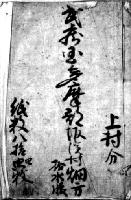
Land survey book of Sakahama Village (Hatakata)
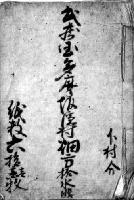
Land survey book of Sakahama Village (Hatakata)
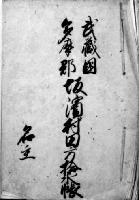
Land Survey Book of Sakahama Village (Takata)
The Ichimura family in Sakahama has preserved many old documents and historical materials from the Edo period to the Meiji period. The Ichimura family served as village officials in Sakahama village during the Edo period, and most of the documents were created as a result of their work as village officials. The contents of the documents are Land survey book , Tax Related documents, Village official of Appointment The documents are from the Edo period and cover a wide range of subjects, including documents related to Shinto and Buddhist temples, and the museum has 1,066 documents from the Edo period, the largest collection in the city, making it one of the city's finest historical documents in terms of both quality and quantity. Kanei From 6th year (1629) Keio It covers a period of 239 years, up to 1868, and contains materials that give insight into the state of Sakahama village at that time and the lives of the farmers who lived there.
Musashi Province Tama County Sakahama Village Takata Shui-cho (Ichimura Family Documents 36)
Horeki era The map of Sakahama village created in 1753 Land survey book is. Land survey book The land survey book is an official record of the results of a land survey carried out in each village. Places of interest (location), Rank Ke (grade), acreage (area), petitioner (Farmer) and other details are recorded, and by confirming this, taxes are collected every year. Tax The purpose of the project was to secure a certain amount of rice. Horeki era 3 years and Tenpo A total of ten land survey books from the year 1839 are preserved.
Sakahama Village Tax allotment letter (Ichimura Family Documents 1)
Tax allotment letter should be paid in that year Tax This is a billing document that lists the locations of the items. Shogunate magistrate of Nakano From Mr. Village official It was issued to the Ichimura family and is the oldest in the city. Kanei Created in 1629 Tax allotment letter In addition, Tax allotment letter In contrast, Tax This is a certificate issued when Tax payment bill There are also many documents remaining.
Appointment of leading role・Family name and sword Permit Letter of Declaration (Ichimura Family Documents 290)
Ansei In the fourth year (1857) Headman Issued at the time of replacement Jito from Letter of Declaration This year in Sakahama Village, Headman but Izaemon Tominaga He is the son of Ginpei It has been replaced by the new Headman For Ginpei, Miao Yu's sword However, since Ginpei was in poor health, going to the capital etc. Business about Group leader was appointed to serve in his place. Group leader This document gives insight into the life of the Ichimura family who served as the head priest.
Tenmangu Shrine Festival Lion's head one piece Discussion For every Certificate (Ichimura Family Documents 108)
About the festival of Tenmangu Shrine in Sakahama Bunsei This document was written in 1823. At that time, the Tenmangu Shrine festival was held every year on August 25th. Lion's head but Head The document records how a dispute arose over this matter over something trivial, leading to a settlement.
Memo of the Kayagare Group (Ichimura Family Documents 89)
In the Edo period, the roofs of houses Roofing The roof replacement was a joint effort by the villagers. This was because the work of replacing the roof required a lot of manpower and money. culture It was created in 1814 and features a Roofing The construction was carried out in Sakahama Village for the replacement of the Endless (The villagers contribute to each other's investments to carry out the business.) Money 200 Sentence , 5 tassels of rope, firewood Bring two together and put them on the roof. Roofing It was decided that we would help with the replacement for three days each.
References: "Inagi City's Historical Documents (1)", "Inagi City History Volume", "Inagi City History Materials Volume 2"
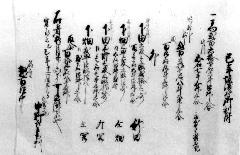
"Sakahama Village Annual Tax Allocation Letter"
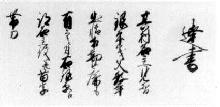
"Letter of appointment for the appointment of the main character and permission to wear a sword with a surname"
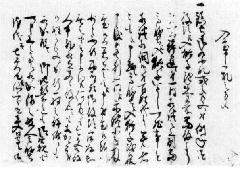
"Certificate for one case of Tenman Shrine Festival Shishigashira"

"Kayagae Renchu Kakucho"














